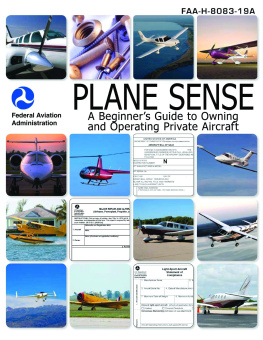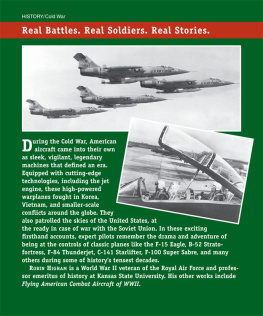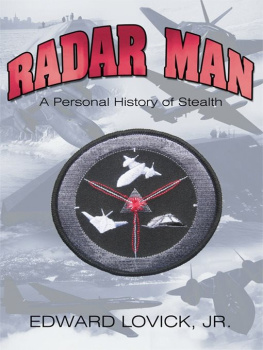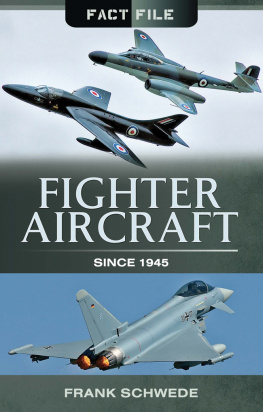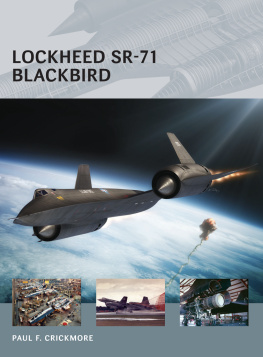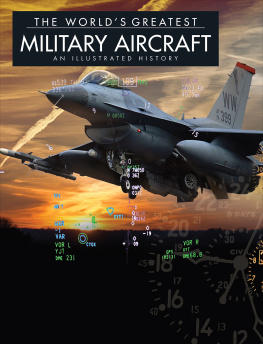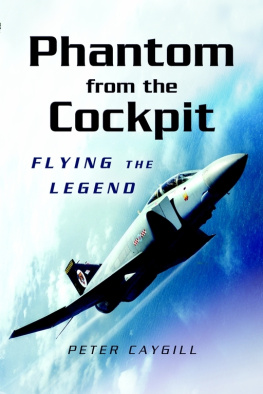
SR-71
The Complete Illustrated History of the Blackbird, The Worlds Highest, Fastest Plane
Col. Richard H. Graham, USAF (Ret.)


First published in 2013 by Zenith Press, an imprint of MBI Publishing Company, 400 First Avenue North, Suite 400, Minneapolis, MN 55401 USA
2013 Zenith Press
Text 2013 Richard H. Graham
All photographs are from the authors collection unless noted otherwise.
All rights reserved. With the exception of quoting brief passages for the purposes of review, no part of this publication may be reproduced without prior written permission from the Publisher. The information in this book is true and complete to the best of our knowledge.
Zenith Press titles are also available at discounts in bulk quantity for industrial or sales-promotional use. For details write to Special Sales Manager at MBI Publishing Company, 400 First Avenue North, Suite 400, Minneapolis, MN 55401 USA.
To find out more about our books, join us online at www.zenithpress.com.
Digital Edition: 978-1-61058-812-6
Hardcover Edition: 978-0-7603-4327-2
LIBRARY OF CONGRESS CATALOGING-IN-PUBLICATION DATA
Graham, Richard H., 1942
SR-71 : the complete illustrated history of the Blackbird, the worlds highest, fastest plane / Col. Richard H. Graham, USAF (Ret.).
pages cm
Includes bibliographical references and index.
ISBN 978-0-7603-4327-2 (hbk.)
1. SR-71 Blackbird (Jet reconnaissance plane)History. I. Title. II. Title: Complete illustrated history of the Blackbird, the worlds highest, fastest plane.
UG1242.R4G733 2013
358.4583dc23
2012044644
Editor: Scott Pearson
Design Manager: James Kegley
Designer: Diana Boger
Cover designer: Simon Larkin
10 9 8 7 6 5 4 3 2 1
PHOTO CREDITS
On the front cover: Photo illustration captures the feel of flying the SR-71 at the edge of the atmosphere. Lockheed Martin (SR-71); MarcelClemens/Shutterstock.com (background)
On the frontis: Lockheed Martin
On the title page: Lockheed Martin
For all the military and civilian personnel who worked on the SR-71.
Contents
Foreword

This latest book in Col. Rich Grahams series on the SR-71 provides comprehensive, articulate, and well-illustrated coverage of the programs entire history. The recent declassification of many details on the development and operations of the early A-12 version of the aircraft under the CIAs Oxcart program help make this broader understanding possible.
My earliest inkling that this kind of aircraft existed came before I entered the intelligence profession. As one of the first tourists allowed to travel independently in the U.S.S.R., I rode a Russian passenger ship into the Far East portal at Nakhodka harbor, just across the peninsula from the Vladivostok Soviet naval complex, on a bright, sunny afternoon in late 1972. As we approached the dock, I spotted a very high contrail moving toward us from the south, parallel to the coast, at a jaw-dropping rate of speed. The aircraft generating it was so high that nothing could be seen but a very tiny speck a long distance in front of it. In less than half a minute it disappeared to the northbut not before what were clearly two missile contrails rose vertically to intercept and then fell away, short of it and far behind. I later learned that there had indeed been an SR-71 mission in that theater, on that day. The experience was unforgettable, like most things associated with the Blackbirds.
The SR-71 family of aircraft met a clear intelligence need at an important time in U.S. history. Together, they survived almost as long as the Cold War. They rightly have a legendary place in the annals of aviation history. All of the manned aircraft speed and altitude records of these aircraft are still unsurpassed after more than fifty years since the first A-12 flight. The pioneering technologies invented for these aircraft and their sensors also paved the way for much of our space and military-stealth capabilities today.
Everything about the SR-71 family of aircraft and the unique individuals who developed its design variants, tested them, flew them, managed their highly classified missions, or supported those missions merits superlatives. There are few better examples of the American ability to quickly address pressing needs by employing expert knowledge, dedicated teamwork, flexible management, and continual, adaptive innovation.
Though I was not directly associated with either the Oxcart or SR-71 programs during my thirty-eight years of federal service in CIA and DIA in various intelligence positions, in many different job contexts I developed a thorough appreciation for these aircraft, their capabilities, and the dedicated professionals who designed, developed, piloted, and supported them.
In mid-career I was able to task the SR-71 several times to support advanced sensor evaluation projects that I helped manage. The response satisfied our data needs and image requirements quickly and precisely, answering crucial questions that eliminated development guesswork and reduced costs for future reconnaissance capabilities.
The SR-71 earned a solid reputation for reliably providing good results. More than a few intelligence successes (some of which are still classified) were achieved through the use of these extraordinary reconnaissance aircraft. They could appear on the scene unwarned, gather synoptic sensor data over a broad area, and leave so quickly there was no time for the target nation to prepare or react effectively. In the intelligence community, there was such respect for its many uses that there are still SR-71 models on desks of intelligence professionals today.
In recent years I have been fortunate to become closely acquainted with some of the key men involved in these programs as I entered on a personal, but work-related quest to help them recount their remarkable teamwork experiences to government employees, congressional staffs, and the public. I am convinced that the exceptional work they did demands that their stories be told and retold at every opportunity. Doing so inspires our national leaders and intelligence and service professionals, as well as the public. It also may encourage similarly risky technological investments in other important areas.
I met Rich early in this process, and soon convinced him to recount his exceptional SR-71 experiences before a very receptive group of industry and intelligence professionals. We have since participated in related historical events (such as the dedication of the A-12 memorial at CIA) and worked together closely to facilitate the 2010 Oxcart Legacy Tour sessions at Washington, D.C., government and museum venues. We became good friends, having a common goal in the process. I am most pleased to see that in this book Rich is relating the whole story of these programs in a readable way for a larger public audience to enjoy.
I have often visited the SR-71 and A-12 aircraft now on display at the Smithsonians Udvar-Hazy Air and Space Museum, the CIA, and the USAF museums in Dayton, Ohio, and at Beale AFB, California. Each meeting with one of these Blackbirds is almost mystical. The feeling that immediately comes upon one at first glimpse is that you are in proximity to greatness. After you read this excellent book, I hope that you, too, will make the effort to see these timeless aircraft up close in some of their museum locations.









